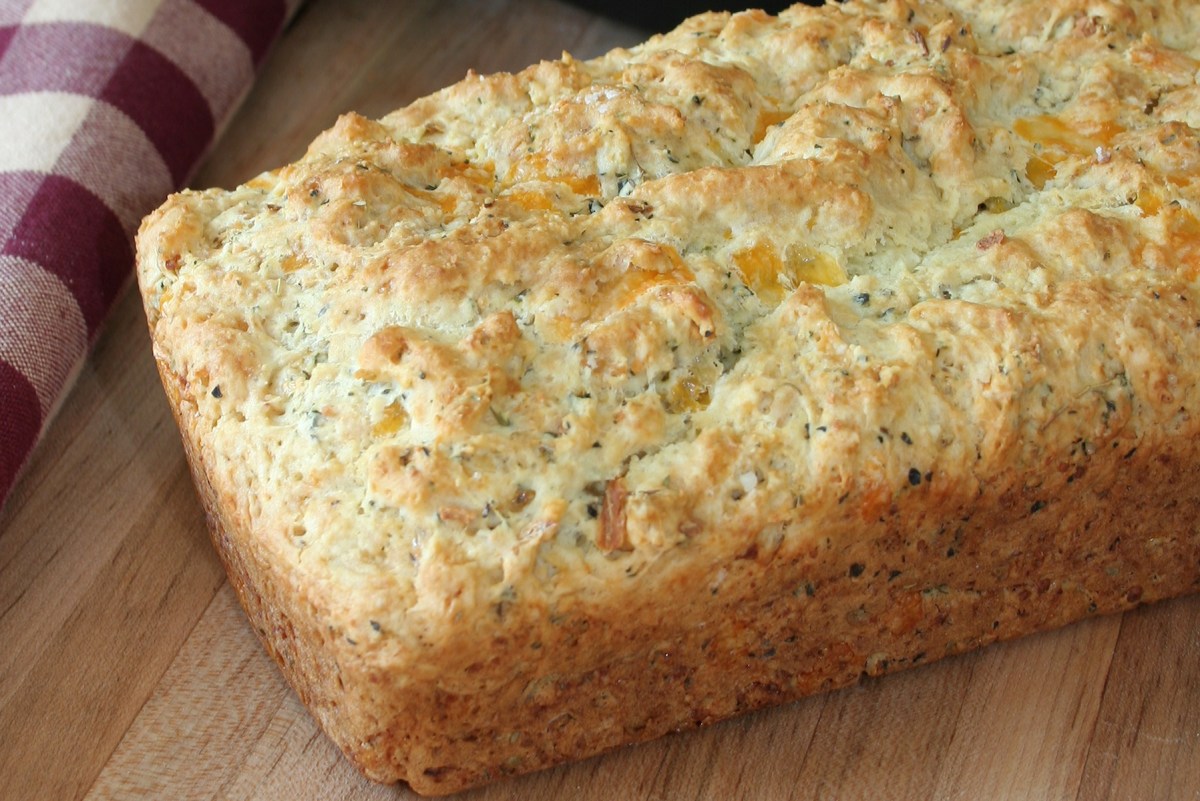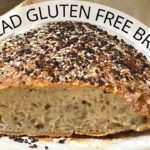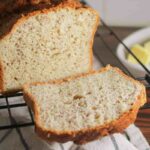Imagine sinking your teeth into a warm, savory loaf, bursting with the fragrant aroma of fresh herbs and the rich, sharp tang of cheese. This isn’t just any bread; it’s a gluten-free masterpiece, crafted to delight even the most discerning palate. This recipe unlocks the secrets to creating a light, airy, and incredibly flavorful gluten-free herb and cheese bread, perfect for any occasion, from casual weeknight dinners to elegant gatherings. Prepare to be amazed by how easily you can achieve bakery-quality results in your own kitchen.
This recipe provides a comprehensive guide, from selecting the perfect gluten-free flour blend to mastering the art of achieving the ideal dough consistency. We’ll explore various herb and cheese combinations, offering exciting flavor variations to suit your preferences. Detailed step-by-step instructions, accompanied by helpful tips and troubleshooting advice, ensure a successful baking experience, regardless of your skill level. Get ready to elevate your gluten-free baking game!
Recipe Overview and Ingredients
This recipe delivers a delightful savory bread, perfectly suited for dipping in soups, alongside salads, or simply enjoyed on its own. The gluten-free nature makes it accessible to a wider audience, while the blend of herbs and cheese creates a deeply satisfying flavor profile. The texture is surprisingly similar to traditional bread, achieving a soft crumb and a slightly crisp crust.
This savory gluten-free herb and cheese bread is remarkably easy to make, requiring readily available ingredients and a straightforward process. The result is a loaf of bread that is both visually appealing and incredibly flavorful, making it an ideal addition to any meal.
Gluten-Free Flour Options
Choosing the right gluten-free flour blend is key to achieving the desired texture. A blend is generally preferred over a single flour type, as it offers a more balanced outcome in terms of texture and rise. Several excellent options exist, each with its own characteristics. For example, a blend of brown rice flour, tapioca starch, and potato starch provides a good balance of lightness and moisture. Another popular option is a pre-made gluten-free all-purpose flour blend, readily available in most supermarkets. These blends often contain xanthan gum, which helps to mimic the gluten’s binding properties. Experimenting with different blends may be necessary to find your preferred texture.
Cheese Selection
The type of cheese you choose significantly impacts the final flavor of the bread. Sharp cheddar offers a strong, tangy taste that pairs well with many herbs. A milder cheese like Gruyere provides a nutty and slightly sweet flavor, offering a more subtle complement to the herbs. For a richer, more intense flavor, consider using Parmesan or Asiago. Even a blend of cheeses can create a complex and delicious result. The key is to select a cheese that complements the chosen herbs.
Herb Selection and Flavor Profiles
The herbs chosen play a crucial role in creating the overall flavor profile of the bread. Rosemary, with its slightly piney and earthy notes, works beautifully with sharp cheddar. Thyme, offering a more delicate, slightly lemony flavor, pairs well with milder cheeses like Gruyere. A blend of herbs such as oregano, basil, and parsley provides a more robust, Mediterranean-inspired flavor. The possibilities are endless, depending on personal preference and the chosen cheese. Consider the individual flavor profiles of each herb and how they will interact with the cheese to create a harmonious and balanced flavor combination.
Step-by-Step Baking

This gluten-free herb and cheese bread recipe is designed for ease of use, even for novice bakers. The following steps will guide you through the process, ensuring a delicious and satisfying outcome. Each step is detailed to minimize confusion and maximize success. Pay close attention to the dough consistency, as this is crucial for achieving the perfect texture.
Detailed Baking Steps
The recipe unfolds in a series of straightforward steps, focusing on precise measurements and gentle handling of the gluten-free flour blend. This approach minimizes the risk of a tough or crumbly final product.
| Step | Ingredient | Action | Time |
|---|---|---|---|
| 1 | Gluten-free flour blend, salt, baking powder | Preheat oven to 375°F (190°C). Whisk together dry ingredients in a large bowl. Ensure all ingredients are thoroughly combined to prevent pockets of baking powder or salt. | 5 minutes |
| 2 | Cheese (shredded), herbs (dried or finely chopped fresh) | Add the shredded cheese and herbs to the dry ingredients. Gently toss to distribute evenly throughout the flour mixture. Avoid overmixing at this stage. | 2 minutes |
| 3 | Eggs, oil, milk (or milk alternative) | In a separate bowl, whisk together the eggs, oil, and milk until light and frothy. This emulsifies the fats and liquids, creating a smoother batter. | 3 minutes |
| 4 | Wet and dry ingredients | Gradually add the wet ingredients to the dry ingredients, mixing gently with a spatula or wooden spoon until just combined. Overmixing can lead to a tough bread. The dough should be slightly sticky but not overly wet. | 5 minutes |
| 5 | Baking dish | Pour the batter into a greased 8×8 inch baking dish. Spread evenly to ensure uniform baking. | 2 minutes |
| 6 | Oven | Bake for 30-35 minutes, or until a toothpick inserted into the center comes out clean. The top should be golden brown and slightly firm to the touch. | 30-35 minutes |
| 7 | Cooling rack | Remove from the oven and let cool in the pan for 10 minutes before transferring to a wire rack to cool completely. This prevents the bread from becoming soggy. | 10+ minutes |
Achieving the Right Dough Consistency
The key to a successful gluten-free herb and cheese bread lies in achieving the correct dough consistency. The dough should be moist enough to hold its shape but not so wet that it is runny. If the dough seems too dry, add a tablespoon of milk or water at a time until it reaches the desired consistency. Conversely, if it’s too wet, add a tablespoon of gluten-free flour blend at a time until it comes together. The ideal consistency is similar to a thick pancake batter. A slightly sticky dough is acceptable, as this helps create a tender crumb.
Troubleshooting and Tips for Success
Baking gluten-free bread can present unique challenges, often resulting in dense, crumbly loaves far from the light and airy texture desired. Understanding these challenges and implementing a few key techniques can significantly improve your results, leading to a delicious and satisfying gluten-free herb and cheese bread. This section addresses common issues and provides solutions to ensure your baking triumph.
Common Gluten-Free Baking Problems and Solutions
Gluten-free flours lack the elasticity of wheat flour, making it crucial to use the right combination and techniques. A common issue is a dense, gummy texture, often caused by using too much liquid or the wrong type of starch. Another problem is a crumbly loaf, frequently resulting from insufficient binding agents or an imbalance in the flour blend. Finally, uneven browning can occur due to variations in oven temperature or improper pan preparation.
- Dense, Gummy Texture: Reduce the amount of liquid in the recipe, ensuring the dough is not overly wet. Experiment with adding more gluten-free binding agents like xanthan gum or psyllium husk. Consider using a combination of gluten-free flours, such as almond flour and tapioca starch, to improve texture.
- Crumbly Texture: Increase the amount of binding agents such as xanthan gum or psyllium husk. Ensure you’re using a well-balanced blend of gluten-free flours that provide both structure and moisture. Avoid overmixing the dough, as this can lead to a tough, crumbly result.
- Uneven Browning: Preheat your oven thoroughly to ensure even heat distribution. Use a dark-colored baking pan or a baking stone to promote even browning. Rotate the pan halfway through baking to ensure even cooking.
Achieving a Light and Airy Texture
The key to a light and airy gluten-free bread lies in creating a well-balanced dough with sufficient leavening and the right amount of moisture. Overmixing can lead to a tough loaf, while undermixing can result in a dense one. The use of specific ingredients also plays a crucial role.
Using a combination of gluten-free flours, such as rice flour, tapioca starch, and potato starch, provides a balance of structure and lightness. Adding a small amount of baking powder and/or yeast helps create lift and airiness. Gentle folding, rather than vigorous mixing, incorporates air into the dough without developing gluten (which isn’t present anyway, but overmixing can still negatively affect texture). Finally, ensuring the correct amount of liquid is vital. A slightly drier dough is generally preferred for gluten-free bread to avoid a gummy texture.
Proper Storage for Extended Freshness
To maintain the freshness and prevent your gluten-free herb and cheese bread from drying out, proper storage is essential. Allow the bread to cool completely on a wire rack before storing. Wrapping it in plastic wrap or placing it in an airtight container will help retain moisture.
For longer storage, consider freezing the bread. Slice the cooled loaf and wrap individual slices tightly in plastic wrap, then place them in a freezer-safe bag. This allows you to easily thaw and enjoy slices as needed, maintaining their freshness for several months. Alternatively, you can freeze the entire loaf, wrapped tightly in plastic wrap and then foil, for up to three months.
With this Savory Gluten-Free Herb and Cheese Bread recipe, you’ve unlocked the potential to create a truly exceptional gluten-free loaf. From the careful selection of ingredients to the precise baking techniques, each step contributes to the final product’s remarkable texture and flavor. Remember to experiment with different herbs and cheeses, adapting the recipe to your own tastes and dietary needs. The result? A delightful bread that’s both satisfying and surprisingly easy to make. Enjoy the compliments, and savor every delicious bite!
Q&A
Can I use different types of gluten-free flour?
Yes, experiment with different blends! The recipe’s success depends on the overall protein content, so adjust liquid as needed for optimal consistency.
How long does the bread stay fresh?
Store it in an airtight container at room temperature for up to 3 days, or freeze for longer storage.
Can I make this bread ahead of time?
The dough can be prepared a day in advance and refrigerated, then baked as directed.
What if my bread is too dry?
Next time, add a tablespoon or two more of liquid to the dough.
What are some dairy-free cheese alternatives?
Nutritional yeast, vegan cheddar shreds, or a blend of dairy-free cheeses work well.


